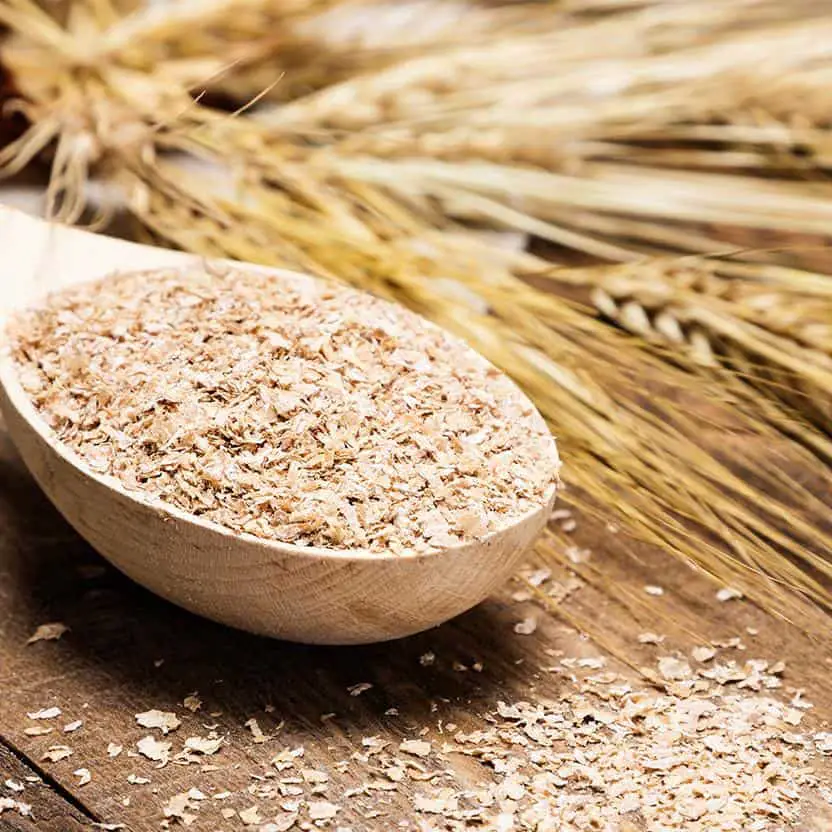
In the diet of pets, both animal and plant foods should be present. The latter is the main source of fiber, which many experts consider the fourth nutrient – along with proteins, carbohydrates and fats. Vegetables do not provide a sufficient amount of plant fibers in the animal’s body, therefore, when asked whether it is possible for dogs to take bran, veterinarians give an affirmative answer. Yes. Dogs can eat Bran.
Why bran is useful to dogs
From time immemorial, dogs and their wild ancestors ate meat, that is, animal food. But along with this, the plant also entered their body – first of all, with the contents of the stomachs of their victims, who feed on grass and seeds of cereals. Currently, their owners provide a balanced diet for the pet, but vegetables do not contain the required amount of fiber, and in winter the range of vegetables and fruits is rather scarce, and the cereals from which porridge is cooked for dogs sometimes do not contain dietary fiber at all.
Bran can be used as an additional source of healthy fiber. They are a by-product of grain processing and contain the shells of the grains and their germs. Bran is useful not only as a source of coarse dietary fiber, which acts like a brush in the intestines of the animal, promoting the food lump and improving intestinal motility, but also other useful substances, primarily:
- B vitamins;
- trace elements;
- polysaccharides.
Vitamins are involved in all vital processes in the body, increase its immunity, the ability to resist various infections. Among the trace elements that are contained in bran, selenium is the most important and valuable. He participates in the synthesis of DNA, is a necessary component of almost all oxidative processes in the animal body.
Bran contains beta-glucan – this is one of the most important polysaccharides, which binds fatty acids in the intestine, lowers the level of cholesterol in the blood, preventing its accumulation on the walls of blood vessels.
Any veterinarian can tell dog owners about the benefits of bran. It is recommended to add them to the food of animals, because the bran:
- participate in the movement of the food lump through the intestines;
- change the glycemic index of foods and prevent too rapid absorption of energy from food;
- regulate the chair;
- improve intestinal motility;
- sorb toxins and other harmful substances and accelerate their removal from the body.
Note: Bran does not cause allergic reactions, so they can be given to absolutely any animal. However, there are certain rules according to which you cannot give a dog bran every day and in large quantities. Whether wheat, oat or rye, the bran contains phytin. This is calcium glycerophosphate, which slows down the absorption of many minerals, in the first place – which is important! – calcium. Bran, consumed in large quantities, can cause flatulence in a dog, become a favorable environment for the development of fungal infections, pathogenic microbes. In extremely rare cases, animals may experience diarrhea.
Which bran is better
Experts differ as to which bran – wheat, rye or oat – is more beneficial for the dog. Therefore, it makes sense to tell how each species is useful.
Wheat bran contains the largest amount of valuable dietary fiber, vitamins and selenium. With their regular use, the stool is normalized in the animal. Rye bran is somewhat inferior to wheat bran in terms of nutrient content, but not inferior in size to the positive effect on the pet’s body. They help to quickly remove toxins from the body, normalize the functions of the digestive system, cope with diarrhea and improve the functioning of the immune system.
There are benefits for the dog’s body and from oat bran. They protect the dog’s gastrointestinal tract from inflammatory processes in it, prevent obesity, the appearance of excess weight, so they are chosen if it is necessary to normalize the pet’s weight. However, they contain less vitamins than other food supplements.
In addition, other types of bran can be given to the dog:
- buckwheat will help cleanse the intestines and liver, remove toxins and other harmful substances from the body;
- rice – normalize intestinal motility, stabilize stools and stop diarrhea;
- barley – contain vitamin E, which strengthens the immune system and protects body cells from free radicals and prevents thrombosis;
- millet – normalize stool and improve the functions of the urinary system.
Note: When choosing bran for feeding a pet, pay attention to their appearance and color, and other characteristics. The product should be gray-brown in color, odorless of mold and other impurities, which not only impair the nutritional properties of the product, but can also harm the pet’s body. It is better to buy bran in a pharmacy or health food stores. The main thing is to choose a product without additives, including fortified ones, and even more so – without salt. Store the product in tightly closed glass moisture to prevent moisture penetration.
How and how much to give to dogs
The correct use of a useful food supplement allows you to avoid negative consequences. It is not recommended to give them to the dog more often 2-3 times a week and in limited quantities:
- small breeds – 1-2 teaspoons;
- medium dogs – no more than 2 dessert spoons;
- large breeds – 2 tablespoons without a slide.
Bran can be combined with both meat and dairy products. Before adding to the food of the dog, they should be briefly soaked in warm water or broth, preferably in the morning. In the evening, a meat-and-vegetable dish is preferable, which requires a longer digestion.
For feeding, you need to pour the required amount of bran with kefir and leave for half an hour so that they swell. They can then be added to the feed. For losing weight dogs, you can prepare a dietary dish with vegetables:
- finely chop carrots and zucchini (or pumpkin);
- stew in any vegetable oil (preferably sunflower, olive, linseed);
- add water and bring to a boil;
- turn off the stove and add bran to the vegetables.
Such a dish should be combined with meat feed in the proportion – 50% meat, 50% – vegetables with bran.
The bran can be given to puppies, pregnant and lactating females. Puppies are introduced into the diet at the age of five months, starting with 1 teaspoon and gradually, in the absence of negative hypersensitivity reactions, the volume can be brought to normal.
Note: To prevent constipation in pregnant and lactating females, no more than 2 teaspoons of bran can be given and no more than twice a week.
What happens if excessive amount of bran is given to dogs?
An excessive amount of bran in a dog’s food can lead to undesirable consequences for health: the absorption of vitamins and microelements decreases, the paranal glands become clogged, and a favorable environment is created for the development of pathogenic fungi and bacteria. Volvulus may occur.






